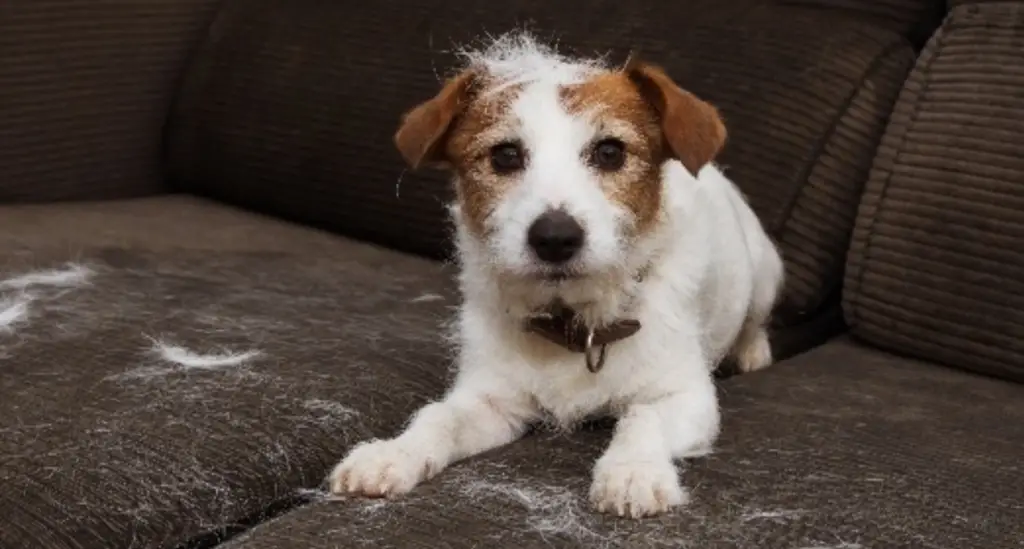Zevo Flying Insect Trap, Fly Trap, Fruit Fly Trap (2 Plug-in Bases + 2 Refill Cartridges)
$12.99 (as of April 16, 2024 20:52 GMT +00:00 - More infoProduct prices and availability are accurate as of the date/time indicated and are subject to change. Any price and availability information displayed on [relevant Amazon Site(s), as applicable] at the time of purchase will apply to the purchase of this product.)Dogs’ fur naturally sheds. For the majority of dogs, shedding is essential for the health of their skin and hair. Dogs shed their hair to get rid of it when it is dried out or otherwise damaged. According to the breed, the season, and whether they have a single or double layer of fur, dogs will lose different amounts of hair.
Controlling dog shedding is an important component of pet care, whether you are getting ready to adopt a new dog or are used to having hair all over your furniture and carpets. And it is not only for keeping your home clean; loose dog hairs may become matted and trap dirt, debris, and body oils. It might cause discomfort for your dog and result in skin problems.
Despite common belief, all dogs shed. In reality, even humans and other species with hair shed. We just shed at various rates. Knowing how a dog’s hair grows can help you comprehend how coat type influences shedding.
Four stages of hair growth and loss take place:
- Anagen: The time when hair grows to its genetically specified length is known as anagen.
- Catagen: The hair stops growing during the Catagen stage, and the root contracts and affixes to the hair.
- Telogen: During the telogen stage, a new hair root is growing below the existing one.
- Exogenous: Old hair falls out to make a place for new hair to develop. The newly formed root enters the anagen stage.
Shedding is a natural process, so we can’t stop dogs from shedding naturally, but we can reduce dog shedding by following these steps.
- Brush your dog.
- Gave the right dog food.
- Give fatty acid supplement
- Cover your furniture and car seats.
- Use the right brush.
- During the summer, bathe your god on occasion.
- Vacuum often
- Use allergy and flea control medicines
- Upholstery Hair Removal
You cannot prevent a dog from losing hair. However, you may pick a dog that sheds less. Although a hypoallergenic dog does not exist, some breeds are less troublesome than others. They create less dander than some other dogs, have hair that is more like human hair, and do not shed. As a result, they are the perfect pets for those who have allergies to pet fur and hair. They also make great companions for dog owners who do not enjoy the mess that shedding may cause.
These dog breeds consist of:
Many dog owners look for dogs that are hybrid species with these breeds. There is no chance that a “doodle” mix won’t shed, either. They probably would not shed as much as most dogs do, though.
All dogs will shed, but there are things you can do to decrease the suffering. Each dog has a distinct coat. It is important to choose the proper brush for their specific fur. For all sorts of fur, wool brushes are a fantastic option. Use long brushes to achieve longer fur. Choose a firm brush for dogs with shorter hair. For detangling woolly or curly coats, wire-pin brushes are the ideal option.
The main advantage of using slicker combs is for puppies that are sensitive to matting and tangles. Short-haired dogs can benefit from rubber curry combs, as can any dog that needs its skin massaged. Combs are useful for removing old hair, dead skin, and allergies. Many dogs like the sensation of being brushed.
Although your dog shedding might be painful, taking the time to groom your dog offers advantages that go beyond merely reducing the amount of fur in your house. It may be enjoyable and allow you to spend quality time together while brushing and bathing your dog. Additionally, it is also a wonderful opportunity to check your dog for any new tumors, parasites, or dry skin.
Does dog shedding ever stop?
The Shedding process cannot be stopped entirely. For dogs, it is a necessary and healthy procedure. It is not a great idea to shave your dog down since it might disturb its natural self-warming and self-cooling processes.
How long does it take for a dog to stop shedding?
One can survive a puppy’s shedding season which can last for two to four weeks. While dog shedding may not be the most delightful aspect of fall, but still many things to appreciate.
What causes extreme shedding?
The following medical issues can result in abnormal shedding:
Infections, Insects, allergies, illness of the kidney, liver, thyroid, or adrenals







